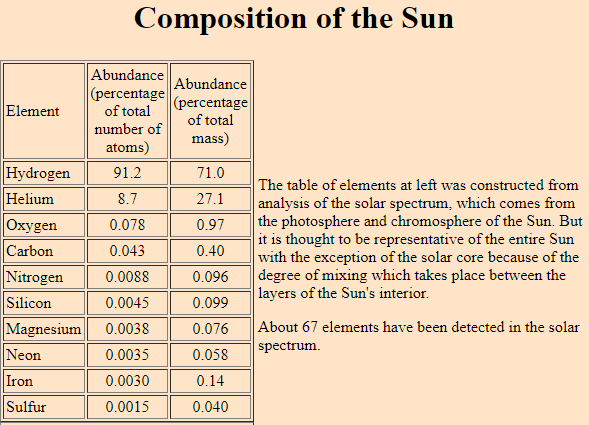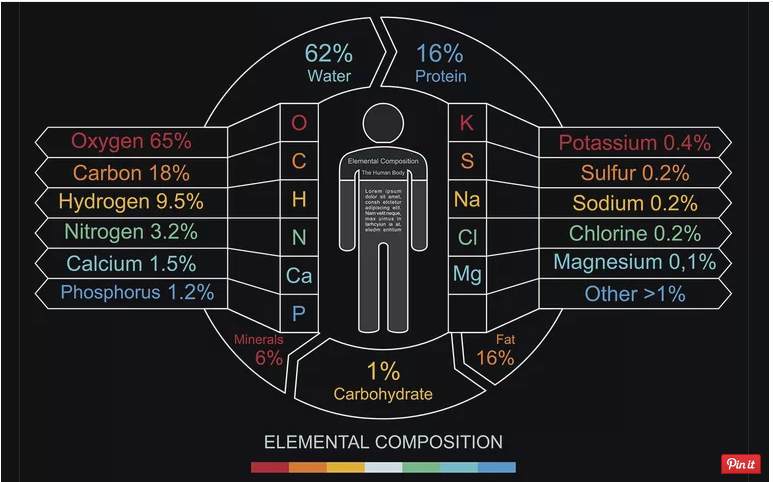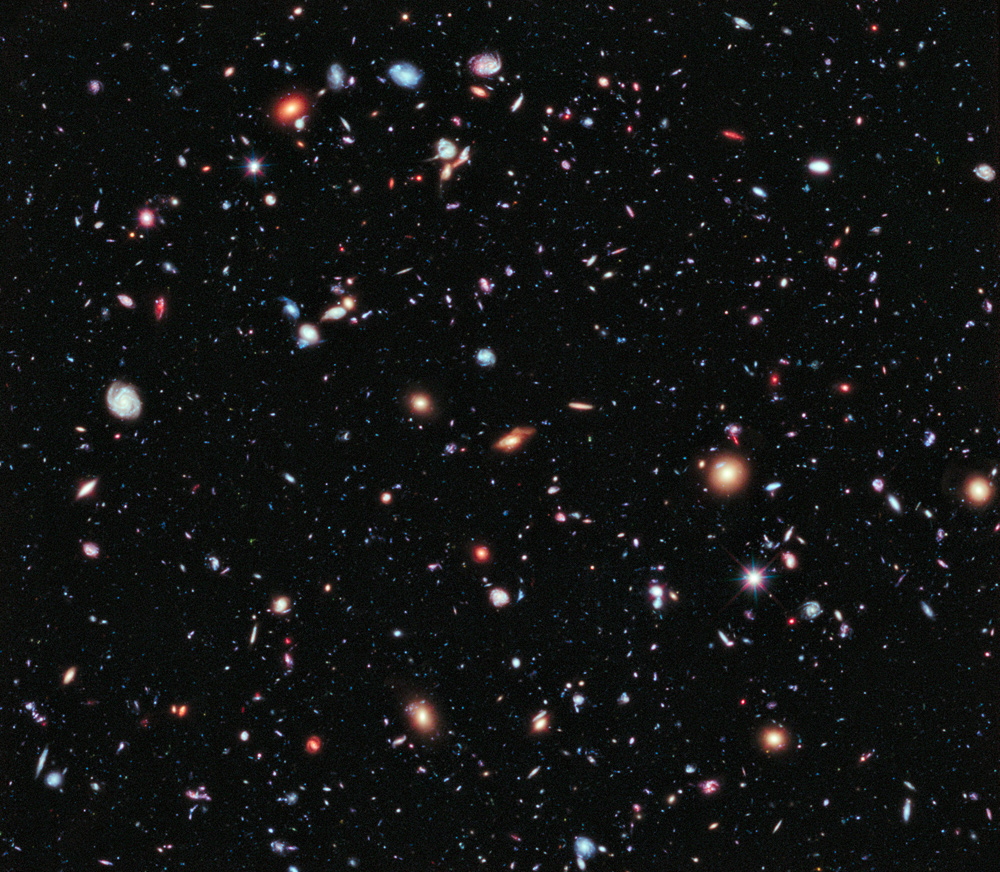December 2018
 My interest in astronomy goes back donkey’s years. During a respite from the work world between 2007 and 2010 I had time to dig into the subject in greater depth than ever before and went hog wild learning all I could, devouring popular science books on the subject with great voracity. I also read widely in quantum theory and cosmology. It’s all absolutely riveting no matter what scale of reality you choose to investigate.
My interest in astronomy goes back donkey’s years. During a respite from the work world between 2007 and 2010 I had time to dig into the subject in greater depth than ever before and went hog wild learning all I could, devouring popular science books on the subject with great voracity. I also read widely in quantum theory and cosmology. It’s all absolutely riveting no matter what scale of reality you choose to investigate.
In Part 1 of this post I examined what it means to shift from an anthropocentric to a Planetary perspective. In this post I’d like to discuss individual perspective in relation to the Cosmos. The relational interaction in this dynamic is far more sketchy. We become way beyond miniscule when put into the framework of the Cosmos and our native perceptual equipment fails beyond a view of the stars in our own sky. To gain any sense of the what’s going on in the greater Cosmos we must perforce rely on the Science Guys. There are some helpful ones among them — Brian Greene, John Gribbin and Jim Al Khalili come immediately to mind, as does a Science Gal, Lisa Randall — all of whom graciously provide a conceptual recounting of what for professionals is chiefly a matter of equations. I can read scientific articles in botany or geology and keep the beat, but put me in front of a technical article on astrophysics consisting almost entirely of equations and things break down very quickly. Cannot compute. Those astronomers and astrophysicists who deign to write books for the Great Unwashed are the only hope people like me have of getting some idea about a reality that can only be approached through research channels available only to Science Guys and Gals.
When dealing with Planetary life we have cozy things always in view like trees and flowers and puffy white clouds. Looking out at the Cosmos, however, takes one somewhat aback. We can only be glad we’re nowhere near most of what goes on out there — if we were we’d be toast in a heartbeat. How anyone in their right mind could take seriously the notion of an anthropocentric universe passeth understanding. The Planet we inhabit is clearly an anomaly. What’s more, it’s less than a speck in the cosmic scheme of things. The overwhelming majority of what transpires in the Cosmos would make the emergence of anything resembling us impossible. That’s the first fact we need to come to terms with as we consider the individual in relation to the Cosmos: we humans are definitely odd man out in the major enterprises of the Universe. The bulk of the Cosmos is not organic, it’s as inhospitable as can be to the lifeform we are. The Periodic Table is not all that big and the elements occur throughout the Universe, so it’s entirely possible that some other kind of life has kicked off somewhere, but that possibility remains moot for us here on our Planet. So in addition to scales of distance our minds can’t grasp in any real sense, we have the double trouble of being at a party where things like black holes and supernovas mingle among the guests. No wonder it’s hard to feel like letting your hair down. One false step and you won’t survive the introductions.
The Hubble images (100 great ones viewable here) have been instrumental in the development of my own experiential sense of the Cosmos. They give me the closest thing I’ll ever have to physical engagement with objects my eyes could otherwise never see. The Hubble Deep Field images are the most evocative for me personally. A patch of sky that appeared empty even to the instruments of ground-based astronomers yielded an image with thousands of galaxies when the Hubble trained its far-sighted eye on it. I contemplate the Deep Field sometimes, trying to take in all the realities it implies in addition to all the objects it reveals. It’s a useful expansion of the mind, but a hard go because there’s nothing to latch on to from an experiential basis. It makes me wonder about the Big Bang and cosmic inflation and how those galaxies in the Deep Field formed so many billions of years ago — questions, always more questions. An astrophysicist would probably have equations floating through his or her head while viewing the Hubble pics. I only got through high school algebra and was glad when that was over. So don’t talk to me about gauge theory or Riemannian geometry, I’ll just go into the dumb blonde thing. 🙂
Curiously enough I find that the link between little old me and what’s out there in the Cosmos occurs most convincingly at very small scale, i.e. the atomic level. If you consider the matter, we humans are really quite extraordinary biochemically speaking. Biochemistry is vastly more complex than much of the chemistry that goes on out in space. Take our sun, for example. It’s all about hydrogen and helium, the first two elements in the Periodic Table. Here’s an overview of the particulars (website here):

From thoughtco.com we have this breakdown of elements in the human body (website here):

Lithium (Li), Strontium (Sr), Aluminum (Al), Silicon (Si), Lead (Pb), Vanadium (V), Arsenic (As), Bromine (Br)
Now think back to your Biology 101 class and consider all the chemical interactions that happen in the body, or just in a single cell. Consider our old friend ATP (adenosine triphosphate), without which none of us would get much done. Think of the Calvin Cycle in photosynthesis, without which none of us would be alive since as heterotrophs we depend 100% on autotrophs (our photosynthetic pals) to capture energy from the sun that we subsequently commandeer for our own purposes. The biochemical processes of life are immensely complex and varied. The sun, on the other hand, has an active repertoire of two — count ’em, TWO — major elements, hydrogen and helium, at least at this stage of the game. There’s more fun involving other elements farther down the road, but when that stuff starts happening we’ll be long gone, so let’s not chip a nail over it, okey dokey? Compared to a star the size of our sun, we’re a chemical wonderland even without the magic of nuclear fusion happening inside us. The Cosmos has it over us hands down as far as scale goes, true, but we more than hold our own at the atomic level. So that’s the party I’m sticking with. Besides, I just had my hair done so the last thing I want is the gravitational pull of some supermassive black hole messing up my extensions. 🙂
I leave things at the atomic level because to go deeper into the quantum layer makes everything seem wonky whether you’re a star or a human being. It’s a different order of beingness entirely, one we surely share with all things in the physicality we inhabit, but one that can’t help but seem uncanny to macro-level beings like ourselves. Maybe if I were a quark it would all seem like eternal reruns of “Friends,” who knows. I don’t really fancy being part of the quantum foam, for some reason. It reminds me of a huge hot tub, and we’ve all heard the stories about hot tub filters left to their own devices, haven’t we … Besides, anyone exhibiting the behaviors of the quantum level is somebody who deserves a wide berth. One has one’s macro-level standards, after all. The basic dance moves of the atomic/molecular level are well enough known and solid enough in a macro sort of way to put both us and our astronomical concitoyens on an easy footing. I’m made of atoms just like a star or a planet or anything else, so when I read about something completely mind-blowing — say, a quasar — I remember the E = mc2 thing but I also keep in mind that hydrogen is hydrogen no matter where it occurs in the Universe, so we can certainly find something to talk about over cocktails. Reminding myself of those things also supports my awareness that all matter in the Universe was apparently cut from the same cloth by the same pair of scissors — that includes both the quasar and little old me. So we’re cousins, really — at quite a remove, true, but cousins nonetheless. We’re all in this business together, whether you’re a mammal running around on Planet Earth or a neutron star spinning some ungodly number of times per second somewhere out there in the pitch darkness (the fastest one known so far, PSR J1748-2446ad, spins at 716 revolutions per minute, which is one-quarter the speed of light, so if you get asked to dance say you have to go to the powder room and EXIT STAGE LEFT).
In Part 1 I chose the term “Planetary Perspective” as a handle for a stance of mind aligned with the reality of the Planet. “Cosmic Perspective” suits as well as anything for naming a perspective that attempts to position itself even more broadly, encompassing the entirety of the Universe. As I’ve just described, I use the atomic level as a basis for that larger perspective, but it’s not and never can be a perspective based on lived experience like the Planetary Perspective. So in practical terms it can only ever be a background awareness in which consciousness takes a position. You can switch to the Cosmic Perspective as the main focus anytime you like, of course, but eventually you find yourself called back home to the Planetary framework, like a kid out climbing trees being called in for dinner. When push comes to shove, we’re animals on Planet Earth. Riding the relativistic jets of a quasar or looking over the event horizon of a supermassive black hole makes for an interesting thought experiment, but it doesn’t put ketchup on the french fries, does it. And I, for one, like plenty of ketchup with my fries. No substitutes will do.
I regard all the mind-boggling objects that pepper the Universe as “space chums.” We’re all at the big party of Creation, everybody’s invited and you’re free to mingle with whomever you like. If the neutron stars get cliquey (they’re notorious for it, all they want to do is talk spin), there’s no need to feel glum, you can mosey on over to the molecular clouds for a while and see what they’re up to. They’ve always got some interesting stories to tell. The front door is always open so you can come and go as you like. The party never stops, so anytime you feel like joining the gang you can be sure there will be plenty of chums hanging out.
Speaking of Creation, I think it’s important to point out an aspect of both Planetary and Cosmic Perspectives that easily goes missing when you’re coming from the human level. The important point is this: we humans discover nothing. What we do is figure something out considerably after the fact — something that already existed that came from something we don’t understand, perhaps can never understand. Quasars have been out there for eons, we didn’t “discover” them, unless you’re talking solely about human perception — but that’s exactly what we’re NOT doing here, approaching everything from the anthropocentric perspective. So when I come across astronomical phenomena with somebody’s name stuck on them I feel that we’ve scrawled graffiti on something pristine before we humans defaced it. For us to plaster KILROY WAS HERE everywhere you look over our view of the Cosmos is an act of juvenile delinquency that leaves one’s head shaking at its rank adolescence. Just what you’d expect from a newbie, isn’t it.
So let’s give credit where credit is due and refrain from doing the Tarzan thing: we humans created nothing of what we see out there in the Universe. Neither did we create the biosphere in which we live on our Planet. Our main talent — more’s the pity — seems to be an irrepressible penchant for messing up what Creation has so handily brought into being. We’ve already altered the chemistry of the oceans with our carbon emissions and our plastic trash now washes up on the shores of islands across the globe. I remember being horrified while watching a TV documentary about deep sea explorations using a bathysphere. When the thing finally got down to the bottom, what was sighted first? Some new and bizarre species previously unknown to science? No, an Adidas tennis shoe. There’s only one possible response to that event:

Part of taking on Cosmic Perspective involves setting aside the anthropocentric obsession that makes people plaster their names on astrophysical phenomena and live in such a manner that tennis shoes end up at the bottom of ocean trenches waiting to be found by descending bathyspheres. We’re not the host of the Creation party — that’s a fact we seem too easily to forget. We’re not even one of the VIP guests. It’s all very nice that we manage to figure out stuff that’s been going on around us in the Universe for several billion years — E = mc2, that sort of thing — but we musn’t ever forget that the Universe had it all figured out ages ago and made it real. We may never know exactly how that happened. Only from the human perspective was it a “discovery” that our galaxy isn’t the only one in Creation — and that only happened in the 1920’s, by the way. From the Cosmic Perspective it’s one fact among myriads of facts, and duuh, of course there are other galaxies in the Universe. The award of a Nobel Prize should bring a sheepish grin to the laureate’s face. “Of course, there it was all along, right under our noses. Those who have eyes to see, etc. etc.” — that should be the acceptance speech.
So when I look at the space chums I conveniently forget the KILROY WAS HERE bit and just focus on the phenomena. That approach fits with the Cosmic Perspective. Once you adopt that perspective it seems very odd indeed to relate cosmic phenomena to particular human beings. Astronomical phenomena existed long before human beings, so why put the cart before the horse? Without several billion years of stellar nucleosynthesis to create the heavier elements our biology relies on, we’d never have been invited to the party in the first place. So let’s not carve our names into the furniture, ok? It makes us look like we were raised in a bloody barn.
One other important point: we are finite and so is our knowledge. Most Science Guys believe that situation to be temporary. I believe it’s permanent. Why? Well, look at the mess we get into when we move to the quantum level. We’ve been busy slapping ourselves on the back as clever fellows for accomplishing the identification — notice that I eschew the word discovery — of the Higgs boson. Good for us. Ain’t Science grand. But get us into the area of quantum gravity and things go wonky in a jiffy. Then take the freeway exit for string theory and branes. The mathematics itself goes berserk and leads us into a cosmological equivalent of “Let’s Make a Deal.” What’s behind Door Number 1? If Door Number 1 is bosonic string theory, the answer is 26 dimensions. If Door Number 2 is superstring theory, it’s 10 dimensions. Doing the M-theory thing behind Door Number 3? Then it’s 11 dimensions. Nobody has the slightest idea which door the prize sits behind. When you put such goings-on up against the concise elegance of the process by which hydrogen is made into helium in the Sun, it looks like we humans on Planet fell down Alice’s hole and started drinking from the wrong bottles. Who knows if we’ll ever have any idea of what the Universe cooked up at that fundamental level of Reality. It’s anybody’s guess at this point.
Accepting the finitude of one’s human knowledge is equally important for the Cosmic Perspective as it is for Planetary Perspective. It’s important to be at one’s ease with knowing very little at all about what’s actually going on at the party. There’s no shame in it — nobody expects a human being, a measly few hundred thousand years on the scene and infinitesimally small on the cosmic scale, to have all the answers. Accepting the facts of the situation is the only way to remain mindful of the Reality of things at the cosmic level. Consequently, when I spend time with the space chums my ignorance accompanies me like the cosmic background radiation of space itself. I’m continually awash in it and know it will be there until I kick the bucket. But it doesn’t stop me from having a good time.
I’ll admit outright that after a spot of time with the space chums I’m ready to go home. I’m far, far too fond of plants and clouds and sunlit mountains ever to think of moving lock, stock and barrel to the cosmic level. That’s not to say that I don’t enjoy being there, indeed I do, but the differences between the astronomical and the mammalian are simply too great to bear over the long term. If I could throw out a few relativistic jets of my own or manage to pull off a bit of stellar nucleosynthesis, maybe I’d not feel like such a junior member of the company. But a girl can only do so much, and it’s good to know your limits. Right?
So I’ll pop in and out of the party, as I’ve been wont to do, always glad I went and always glad to pay another visit. My thoughts linger there between visits, drawn by what I don’t know coupled with the desire to understand more. And so it will go on, I’m sure, until I’m no longer here to tell the tale.

